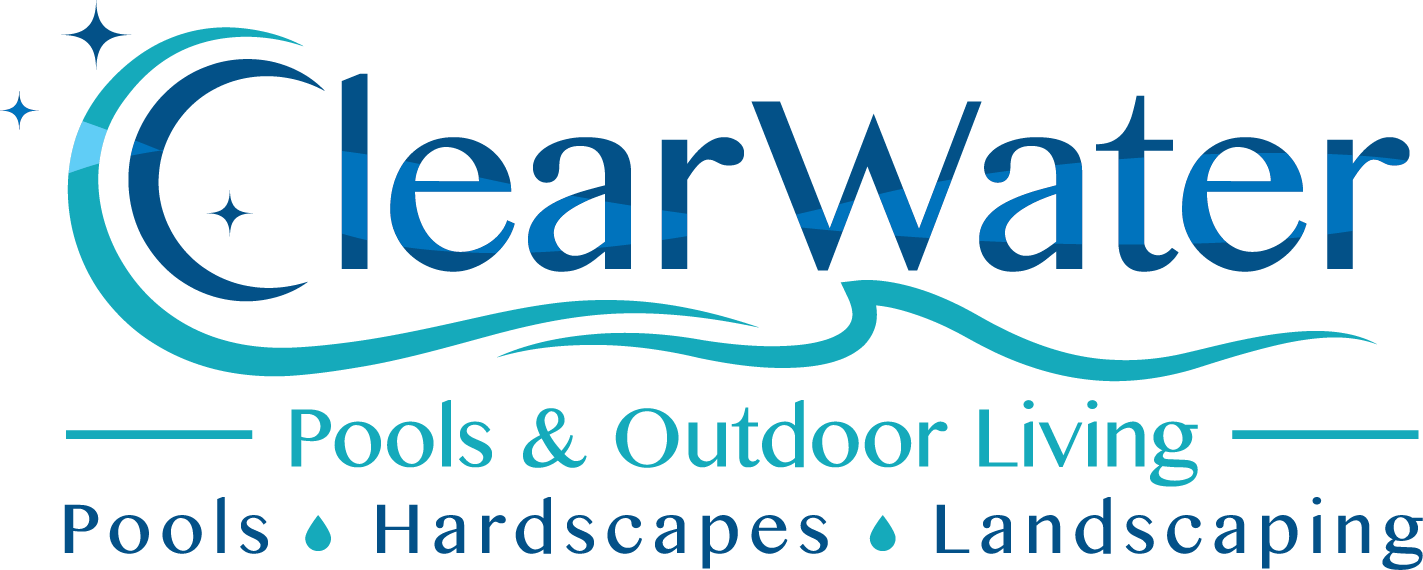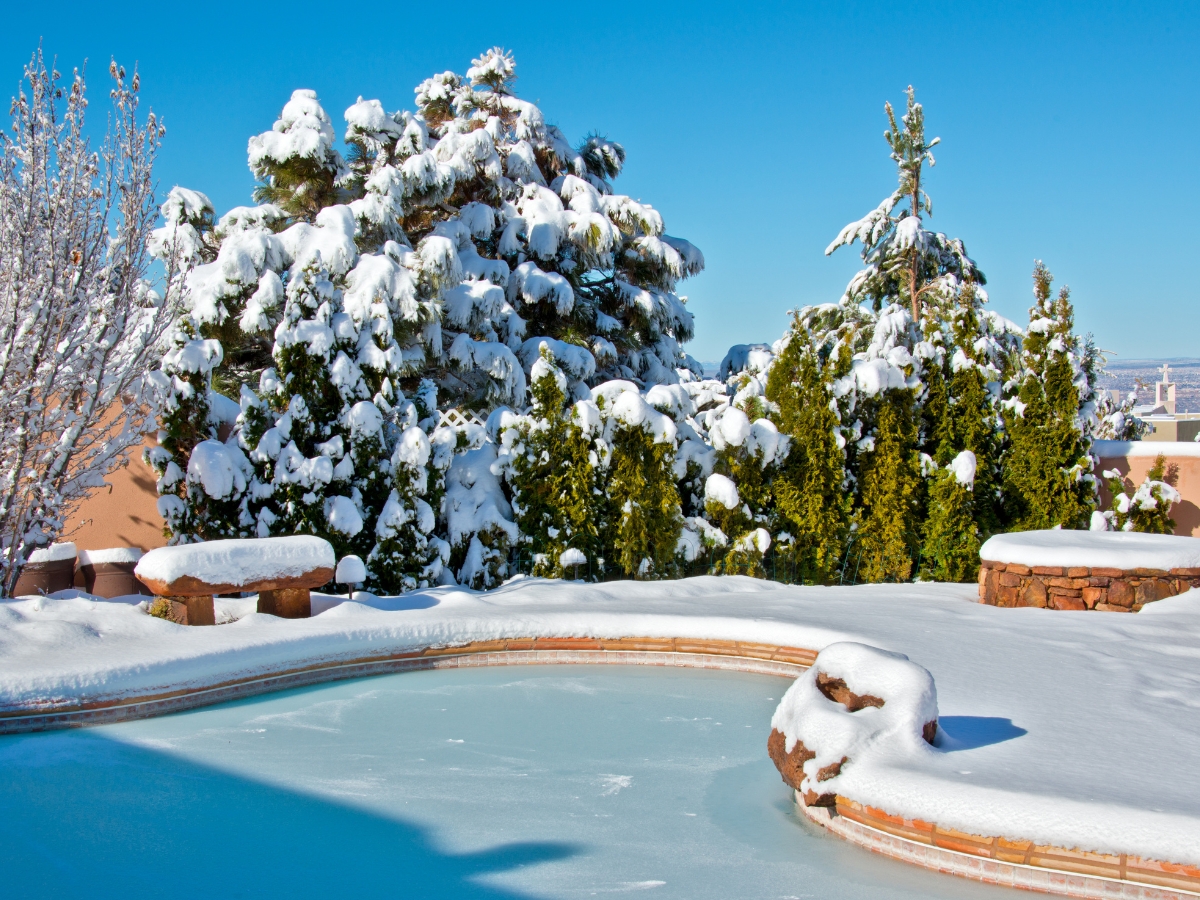As Canton’s autumn evenings cool down to below 65°F, pools left unprotected face the risk of ice expansion, which can lead to cracked pipes, damaged pumps, and thousands in repair costs. This guide provides homeowners with a clear, step-by-step process on how to winterize your pool, preventing freeze damage, and making your spring opening a breeze. You’ll discover why winterization is crucial for Canton pools, the best timing based on local frost patterns and water temperatures, a detailed procedure for inground pools, specific methods for above-ground and saltwater systems, how to protect your equipment and plumbing, a guide to deciding between DIY and professional services, and answers to your most common pool closing questions. Following these steps will safeguard your investment and ensure a smooth start to your pool season next year.
Why Is Winterizing Your Pool in Canton Essential?

Closing a pool for the season is more than putting on a cover. It means balancing the water, lowering the waterline, clearing every line of standing water, and sealing the system until spring. Done right, this prevents freeze damage and slows algae growth during long stretches of cold, damp weather. Ice expands inside narrow spaces. If water is left in plumbing or equipment, that expansion can crack pipes, split pump housings, and distort filter tanks. A careful fall shutdown protects those parts before temperatures swing below freezing and fits neatly alongside your seasonal checklist.
What Freeze Damage Can Occur Without Proper Winterization
When lines are not blown out and sealed, ice can stress skimmer throats and return fittings until they fracture. Residual water inside a pump or cartridge filter expands as it freezes and can warp housings or rupture seals. Heaters are vulnerable as well. A heat exchanger filled with trapped water can crack, and that repair is rarely cheap. Above-ground pools face their own risk. As the water level rises and falls with winter rain, a loose liner can shift or wrinkle. Preventing these issues starts with lowering the water below the skimmer, clearing the plumbing with compressed air, installing winter plugs, and capping exposed equipment so meltwater cannot run back into the system.
How Winterization Saves Time And Money In Spring
A clean close makes spring opening faster and less costly. Balanced water and a final shock reduce the fuel algae needs to take hold, which can cut spring treatment by as much as 75%. Draining and protecting equipment avoids midseason breakdowns that disrupt the first warm weekends. Many homeowners find that a careful fall close cuts spring startup labor about in half. Avoided repairs add up too.
Basic freeze damage to a pump, filter, or heater can land between $500 and $2,000, and that does not include the hassle of waiting on parts when everyone else is opening at the same time. Protecting equipment in the fall also slows corrosion, which extends service life and keeps replacement purchases off the near-term budget.
What A Solid Closing Includes
Aim to close when overnight lows settle near the 50s and leaves begin to fall. Bring pH, alkalinity, and calcium into target range, then add a closing shock and an algaecide rated for winter use. Lower the waterline below the skimmer, remove baskets and directional fittings, and use compressed air to clear suction and return lines one zone at a time. Add pool-safe antifreeze only where lines cannot be fully blown out. Drain pumps, filters, and heaters, open drain plugs, and store small parts in a labeled bag so nothing goes missing. Install a clean, intact cover, then add a leaf net if trees are nearby. Check the cover after big storms and pump off standing water so debris does not strain the fabric.
When To Consider Professional Pool Closing In Canton
Some pools are straightforward to close on your own. Others benefit from a pro, especially when you have multiple water features, a heater, or complex plumbing that ties in a spa. Local specialists bring air compressors sized for long runs, know how to sequence valves so every line is cleared, and dose chemicals to match your pool volume and finish. They also time closings to align with Canton’s typical frost pattern, which helps avoid reopening for a warm snap and closing all over again. Whether you DIY or hire help, a methodical fall close protects equipment, trims opening chores in spring, and delivers reliable results year after year.
When Is the Best Time to Winterize Your Pool in Canton, GA?

The sweet spot is when overnight lows start to settle into the 40s and your water temperature drops into the mid 60s. Close too early and you give up good swimming days. Wait too long, and a surprise cold snap can push water into places where it will freeze and expand. A simple rule works well in Canton: watch the 10-day forecast, track your water temperature each morning for a week, and plan to winterize your pool once the water holds at 65 degrees or lower and nights are consistently cool.
Typical Frost Timing And Local Temperatures
Canton’s first frost usually lands in the first half of November, often between about November 1 and November 10. Overnight lows around that time commonly dip to the low to mid-30s in town and across Cherokee County. Because microclimates vary, yards shaded by woods or set in low spots can see frost a little earlier than nearby neighborhoods. Use those dates as a baseline, then adjust for your specific site. If your yard frosts sooner, move your closing window up a week. If your pool sits in full sun with a heat-retaining patio, you may be able to wait a few extra days, provided night temperatures are still above freezing and your water remains near the mid 60s.
Why Water Temperature Guides Winterization
Chemistry works best in cooler water. When the pool holds at 65 degrees or below, algae growth slows and oxidizers and algaecides do a better job. Add your closing chemicals after you balance pH, alkalinity, and calcium hardness, then circulate long enough to mix. Lower the waterline to the manufacturer’s recommendation, remove baskets and fittings, and clear the lines so no standing water remains in plumbing or equipment. Sealing the system at these cooler temperatures helps your closing kit last through winter and reduces the amount of cleanup needed at spring opening.
How To Plan Around The Forecast Without Stress
Start by checking the 7 to 10 day outlook each morning once October arrives. When you see several consecutive nights in the 40 to 50 degree range, begin daily water temperature checks with a reliable thermometer. Aim to close roughly a week before the average first frost for your yard, but let water temperature be the deciding factor.
In practice, many Canton homeowners find that scheduling the closing when the water stabilizes at 65 degrees gives the best balance of protection and extra swim time. Gather your cover, plugs, and tools a few days early so you are not chasing parts on closing day. If you rely on a service visit, book the appointment inside that same window so the work is finished before a cold front arrives.
A Simple Closing Checklist You Can Trust
Balance water, add a closing shock and a winter algaecide, and run the pump to circulate. Lower the water below the skimmer, blow out and plug each line, and drain pumps, filters, and heaters so nothing is left to freeze. Install a clean, tight cover and check it after heavy rain or wind to remove standing water and debris. Following this sequence at the right time lets you winterize your pool with confidence, protects equipment from freeze damage, and shortens your spring startup so you can get back in the water faster.
What Are the Step-by-Step Winterization Procedures for In-Ground Pools in Canton?
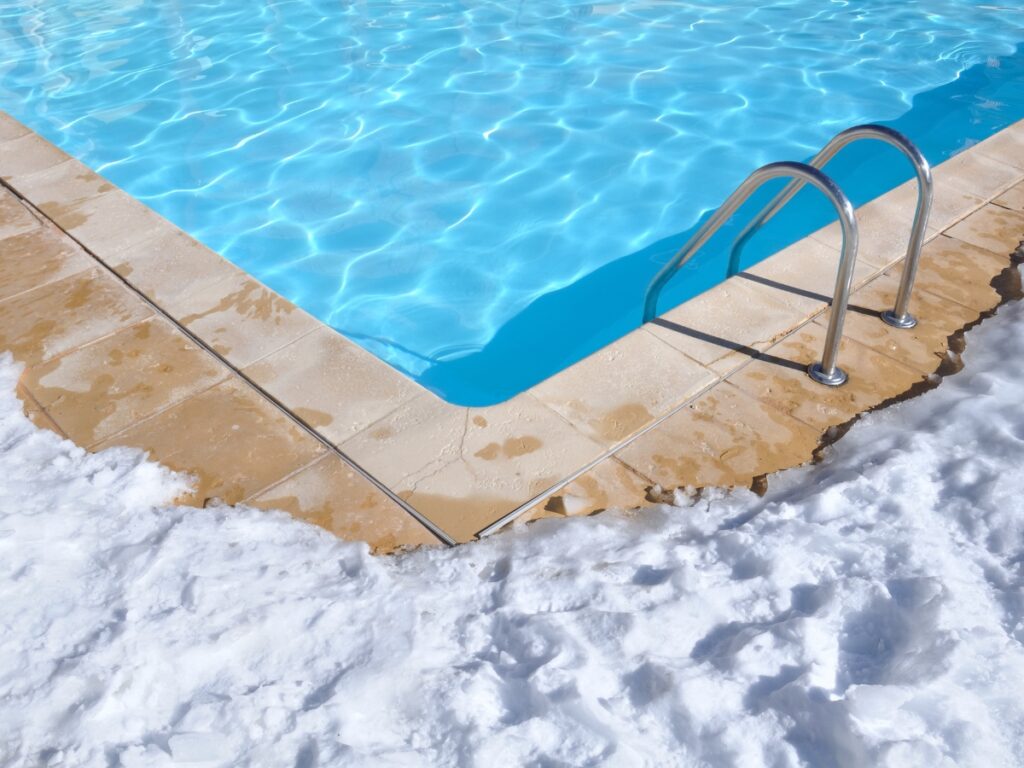
To winterize your pool the right way, follow a clear sequence: clean thoroughly, balance chemistry, add closing chemicals, lower the water, clear and drain every line and component, then secure a tight cover. This order protects equipment from freeze damage, limits staining and scale, and makes spring opening faster.
How To Clean Your Pool Before Winter
Start with debris removal so chemicals can work without fighting leaves and dirt. Skim the surface, then brush walls, steps, and tile to lift algae film and sediment. Vacuum the floor with a manual head or an automatic cleaner until the water looks clear from the shallow end to the deep end. A clean pool lets sanitizers and oxidizers reach their targets and reduces the chance of winter stains.
How To Balance Pool Water Chemistry For Winter
Balanced water protects finishes and equipment while the pool is idle. Bring pH into the 7.2 to 7.6 range so sanitizers perform well. Set total alkalinity between 80 and 120 ppm to stabilize pH through the season. Adjust calcium hardness to about 175 to 225 ppm to protect plaster from etching and to limit scale. Test your pool water chemistry again after adjustments and circulate the system long enough to mix thoroughly.
Which Winterizing Chemicals To Use And How?
Use a winter algaecide to keep growth in check when circulation stops. Add a non-chlorine shock to oxidize organics without big pH swings. Apply a stain and scale inhibitor to block mineral buildup on tile and metal. Dose each product by label directions based on your pool volume and run the pump for at least two hours to distribute. Add chemicals after the pool is clean and water is balanced for best results.
How And Why To Lower The Water Level
For most inground pools, drop the water level about six inches below the skimmer opening. This keeps the skimmer from freezing, leaves room for ice expansion, and still covers the tile line so it does not dry out. A small submersible pump gives the best control and avoids stressing the structure. Do not drain an inground pool completely unless a qualified pro directs you to, since groundwater pressure can cause damage.
How To Drain And Winterize Pumps, Filters, And Lines
Turn off the power at the breaker, then open the drain plugs on the pump housing and let it empty. Backwash and drain sand or DE filters; for cartridge filters, remove and rinse the elements, then store them indoors. Open heater and chlorinator drains so no water remains in low spots. Use an air compressor or a strong shop vacuum to blow out suction and return lines from the equipment pad until each line shows only air at the pool; install winter plugs at returns and the skimmer. Store all plugs, baskets, and small parts in a labeled bag so nothing goes missing by spring.
Best Winter Covers For In-Ground Pools In Canton
Choose a cover that matches your yard and maintenance style. Mesh safety covers are light and allow rain to pass through while blocking leaves, which keeps standing water off the surface. Solid covers block sunlight and help inhibit algae, but you will need a cover pump to remove rainwater. Strap-style safety covers, whether mesh or solid, anchor securely around the pool and are designed to support weight for added safety. Whatever you select, install it tightly and check it after heavy wind or rain to remove debris and pooled water.
Follow these steps at the right time in the fall, and you will winterize your pool with confidence, protect equipment from freezing, and cut your spring startup work to a simple clean and refill.
How Do You Winterize Above-Ground and Saltwater Pools in Canton?
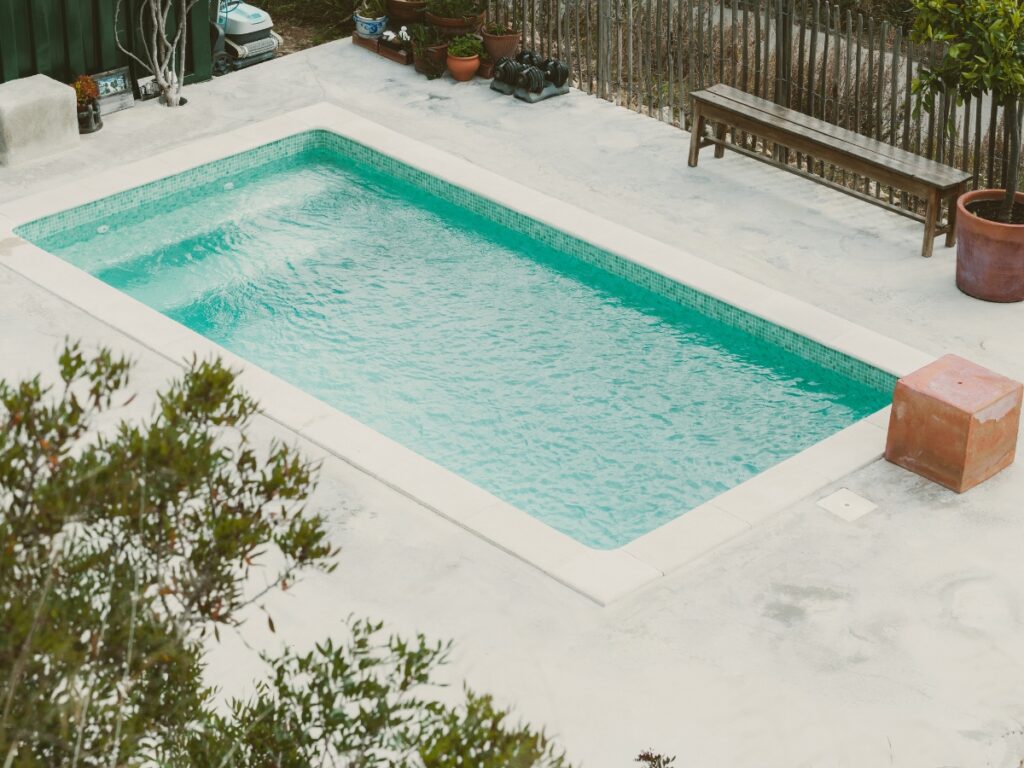
Closing a pool for winter is more than throwing on a cover. Above-ground structures and saltwater pool systems need a few extra steps to handle freezing nights and long periods without circulation. A clear plan protects liners, frames, plumbing, and the salt cell so you can open cleanly in spring. If you plan to winterize your pool yourself, timing matters. Start when water temperatures settle near the mid-60s and nighttime lows trend into the 40s.
Key Steps For Above-Ground Pool Winterization
Begin by disconnecting the suction and return hoses so water cannot sit and freeze in low spots. Drain and dry the pump and filter, then store the drain plugs and small parts in a labeled bag. Lower the water to just below the skimmer opening to protect the throat from ice. Install a skimmer plate or an expansion device so the skimmer body is not stressed if ice forms. Place a properly sized air pillow at the center, inflate it until slightly firm, and tie it off so it stays in place under the cover. The pillow creates a break in the surface ice and reduces pressure on the walls. Add non-toxic pool antifreeze to the skimmer and return lines where they cannot be fully blown clear. Finish by cleaning the cover, pulling it tight, and securing it with the anchors or water bags designed for your pool so wind does not lift an edge.
How Saltwater Pool Winterization Is Different
Salt systems generate chlorine at the cell, which contains coated metal plates that do not like scale or winter corrosion. Before closing, remove the cell and inspect the plates. If you see deposits, soak the cell in the manufacturer-approved solution and rinse thoroughly. Dry the cell and store it indoors where it will not freeze. Set the water for winter chemistry and consider reducing salt concentration to a maintenance level, commonly near 1,000 to 1,500 ppm, which lowers the potential for salt-related corrosion on ladders, rails, and exposed metal. Turn the generator off at the control box after you balance and treat the water so it does not try to run during cold spells when output is unreliable.
Recommended Chemicals For Saltwater Closing In Georgia
Balanced water makes winter chemistry work. Once pH, alkalinity, and calcium are in range, add a non-chlorine shock to oxidize organics without driving the chlorine level too high. Follow with a winter algaecide that is labeled for salt pools so it remains effective as temperatures drop. Use a phosphate remover if tests show elevated levels, since phosphate can fuel spring algae blooms. Finish with a stain and scale inhibitor that is compatible with salt cells to limit mineral buildup on tile lines and metal. Circulate long enough to distribute each product before lowering the water and shutting the system down.
Final Checks And Common Mistakes To Avoid
Do not drain an above-ground pool completely. Liners can shrink or shift when left empty, and wind can flex unsupported walls. Avoid leaving water trapped in pump housings, filters, or heaters. Open every drain and tip small equipment to be sure it is dry.
Confirm the cover is tight and free of sharp edges beneath it that could cause wear. After heavy rain or a wind event, check the cover, remove standing water, and re-secure straps so debris does not build up. With these steps in place, both above-ground and saltwater pools ride out winter without cracked fittings, stained surfaces, or a damaged cell, and spring opening becomes a short, clean, and refill rather than a repair project.
How Should You Winterize Pool Equipment and Plumbing Lines in Canton?
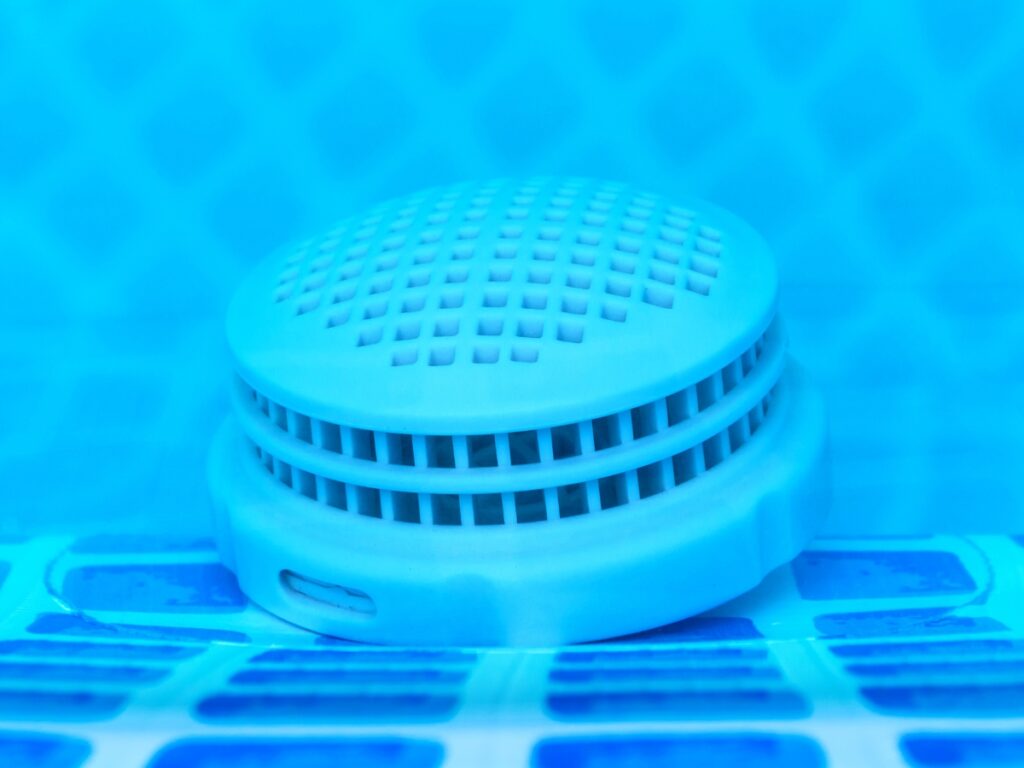
Cold snaps can crack housings, split fittings, and ruin a clean opening next spring. A steady, step-by-step plan protects pumps, filters, heaters, and every line that carries water. The goal is simple. Remove water, leave room for expansion, and seal the system so nothing seeps back in. If you plan to winterize your pool yourself, work in this order: drain, blow out, protect, and label.
Draining And Storing Pumps And Filters
Start by cutting power at the breaker so equipment cannot cycle while you work. Open the drain plugs on the pump and let the housing empty fully. Tip the unit forward to clear low spots. For cartridge filters, remove the lid, take out the cartridges, rinse them, and store them indoors where they will stay dry. Sand and DE filters should be backwashed until the discharge runs clear, then set to winter or open the tank to release any trapped water. Leave lids and ports loosely fitted rather than airtight. A slight gap lets any lingering moisture evaporate and reduces the chance of stale odors when you reopen.
Winterizing Heaters And Chlorinators
Heaters need a careful dry-out. Shut off gas or power, open all heater drain ports, and give the unit a few minutes to empty. Use low-pressure air to push remaining water from the exchanger and headers. Do not overinflate seals. For salt or tablet chlorinators, remove the cell or feeder body, rinse it, and store it in a clean, dry spot. Mark any orientation arrows or wire positions with tape so reassembly in the spring is quick. Keeping these parts dry through winter lowers the risk of scale and freeze cracks.
Blowing Out And Protecting Plumbing Lines
Lines fail when even small pockets of water freeze. Attach an air adapter at the equipment pad, a skimmer, or a dedicated blowout port. Work one zone at a time. Push air until you see a steady stream of bubbles from each return and the main drain. While air is flowing, install threaded plugs in the returns so lines stay dry. Fit a skimmer plate or a closed-cell expansion device to protect the skimmer body. In runs that cannot be cleared completely, pour in pool-safe antifreeze at the low point before plugging the line. Use only products labeled for pools, not automotive types.
Final Checks Before The Cover Goes On
Walk the pad and label any valves that must stay open for drainage. Gather all plugs, baskets, and small parts into a labeled bag so nothing is missing at startup. Verify that backwash hoses, drain caps, and unions are loose enough to vent any surprise thaw and refreeze cycles. Lower the water to the manufacturer’s recommendation, then install a clean cover that seals tightly at the edge. After the first heavy rain or wind, remove standing water and recheck fasteners.
Why Timing And Chemistry Still Matter
Equipment protection works best when paired with cool water and balanced chemistry. Aim to close when nights settle in the 40s and the pool holds near 65 degrees. Balance pH, alkalinity, and calcium, then add a winter algaecide and a non-chlorine shock so the water stays clear under the cover.
Follow these steps, and you will winterize your pool with confidence. Your equipment stays dry, your lines stay intact, and spring opening is a rinse and refill instead of a repair call.
What Are the Differences Between DIY and Professional Pool Winterization Services in Canton?
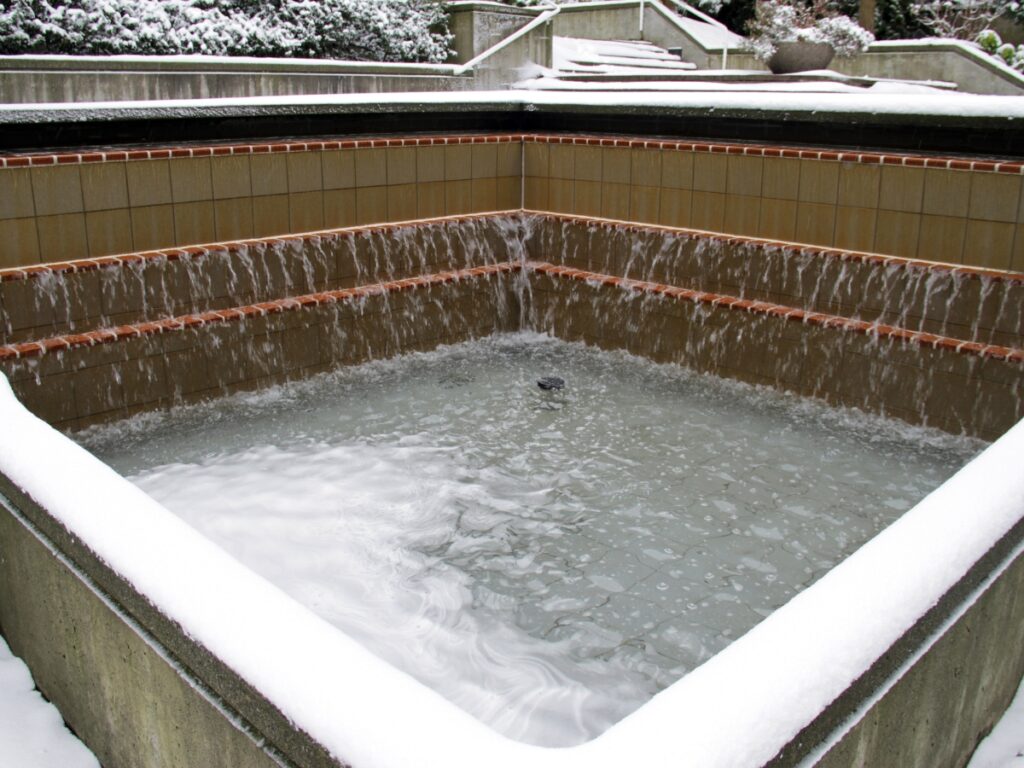
Choosing between doing it yourself and hiring help comes down to pool complexity, time, and risk tolerance. If your setup is a simple above-ground pool with one pump and basic controls, you can likely follow a checklist and close it safely. If your system includes multiple suction and return lines, a heater, a chlorinator, or app-based automation, mistakes get expensive quickly. The goal is the same in every case. Remove water from equipment and plumbing, balance the chemistry, and seal the system before the first hard freeze. When you plan to winterize your pool, make sure timing, tools, and steps are clear before you start.
When To Hire A Professional Closing Service
Consider a pro when you have several plumbing circuits, water features like a waterfall or spa spillway, or a heater that needs careful draining. Homes with tight schedules may also prefer a team that can hit the right weather window and finish in one visit. If your manufacturer requires documented closing procedures for warranty coverage, using a qualified service helps you stay in bounds. The more parts in play, the more value there is in someone who closes pools every day during the season.
Typical Costs In Canton
Pricing reflects pool type and how much equipment must be handled. In-ground closings in Canton often range from $150 to $400, which usually includes balancing chemicals for the close, draining and blowing out equipment and lines, and fitting the cover. Above-ground closings commonly fall between $100 and $250, with line clearing, pool safe antifreeze for lines that cannot be fully blown out, and secure cover installation. Extras like deep cleaning, safety cover anchor work, or repairing a damaged fitting can add to the total. Comparing quotes is easier when you ask what is included and what counts as an add-on.
How Pros Prevent Long-Term Issues
Experienced techs dose chemicals based on volume so winter water stays stable without overdoing it. They use compressors sized to clear long runs and check each return and the main drain for sustained air before installing plugs. Heaters are drained at all low points and briefly blown through to empty the exchanger. Salt cells and feeders are cleaned and stored dry so scale does not harden on plates. This attention reduces corrosion inside pumps and filters, limits scale on plaster and tile, and cuts the chance of freeze cracks in valves or unions. A clean, balanced close also makes algae unlikely under the cover.
What DIY Done Right Looks Like
If you prefer to do the work yourself, match the pro workflow. Balance pH, alkalinity, and calcium. Add a winter algaecide and a non-chlorine shock, then circulate to distribute. Lower the water to the manufacturer’s line, blow out suction and return lines until you see solid air at each fitting, and plug them while air is still flowing. Drain pumps, filters, and heaters at all ports and leave lids loosely fitted so residual moisture can evaporate. Label valves and store small parts in a bag so nothing goes missing by spring.
Both paths can work. Simple pools reward careful DIY. Complex systems benefit from a skilled crew. Choose the route that gives you confidence that the lines are dry, the chemistry is set, and the cover is secure. Do that, and you will open clean, avoid mid-season repairs, and extend the life of your equipment year after year.
What Are Common Questions About Pool Winterization in Canton?
Addressing frequently asked questions can clarify important details about timing, chemical requirements, drainage procedures, equipment care, and specific considerations for saltwater pools, ensuring a flawless closing.
When Should I Winterize My Pool in Georgia?
You should winterize your pool once the water temperature consistently drops below 65°F. In Canton, this typically occurs between mid-October and mid-November, striking a balance between chemical effectiveness and protection against frost.
[Optimal Timing for Pool Winterization]
The timing of pool winterization is crucial, with the ideal window typically falling between mid-October and mid-November in Canton, GA, when water temperatures consistently drop below 65°F. This timing helps to balance the effectiveness of winterizing chemicals and protect against potential frost damage.
What Chemicals Do I Need to Close My Pool Properly?
A complete pool closing kit should include:
- Winter Algaecide: Essential for preventing algae growth under the cover.
- Phosphate Remover: Helps eliminate nutrient sources that algae feed on.
- Non-Chlorine Shock: Used to oxidize organic contaminants in the water.
- Stain and Scale Inhibitor: Protects pool surfaces from mineral deposits.
This chemical regimen helps maintain water clarity and safeguards your pool’s equipment.
Do I Need to Drain My Pool Completely for Winter?
No, inground pools should only be lowered about six inches below the skimmer level. This provides space for ice expansion while maintaining structural support. Completely draining the pool can lead to liner shifting and issues with ground pressure.
How Do I Winterize My Pool Pump and Filter?
Ensure all water is removed by draining the pump housing and filter tanks. Backwash sand or DE filters until the water is clear, and then store filter cartridges and elements indoors to prevent freeze damage and cracks in the equipment.
Is Winterizing a Saltwater Pool Different from a Regular Pool?
Yes, saltwater pools require specific care, including cleaning the salt cell, reducing salt levels to 1,000–1,500 ppm, and using specialized algaecides compatible with chlorine generators. These steps are crucial to prevent cell fouling and corrosion.
Following a thorough winterization plan is the best way to protect your pool’s structure, equipment, and water quality through the cold winter months. Homeowners who winterize correctly will save valuable time, money, and effort when spring arrives. Clearwater Pools Atlanta combines expert knowledge of the Canton climate with professional winterization procedures to ensure your pool is secure all winter long. Get your pool ready now for a smooth, hassle-free reopening next year.
Conclusion
Properly winterizing your pool is essential to protect your investment from Canton’s chilly temperatures and avoid costly repairs come spring. While DIY steps can help, professional winterization ensures no detail is overlooked—from balancing chemicals to securing covers. At Clear Water Pools Atlanta, we make pool services simple and stress-free, so you can rest easy knowing your pool is ready for the cold. Schedule your professional winterization today: Call tel:7704068638 or request a pool estimate online. Let us handle the cold so you can dive into worry-free seasons ahead.
